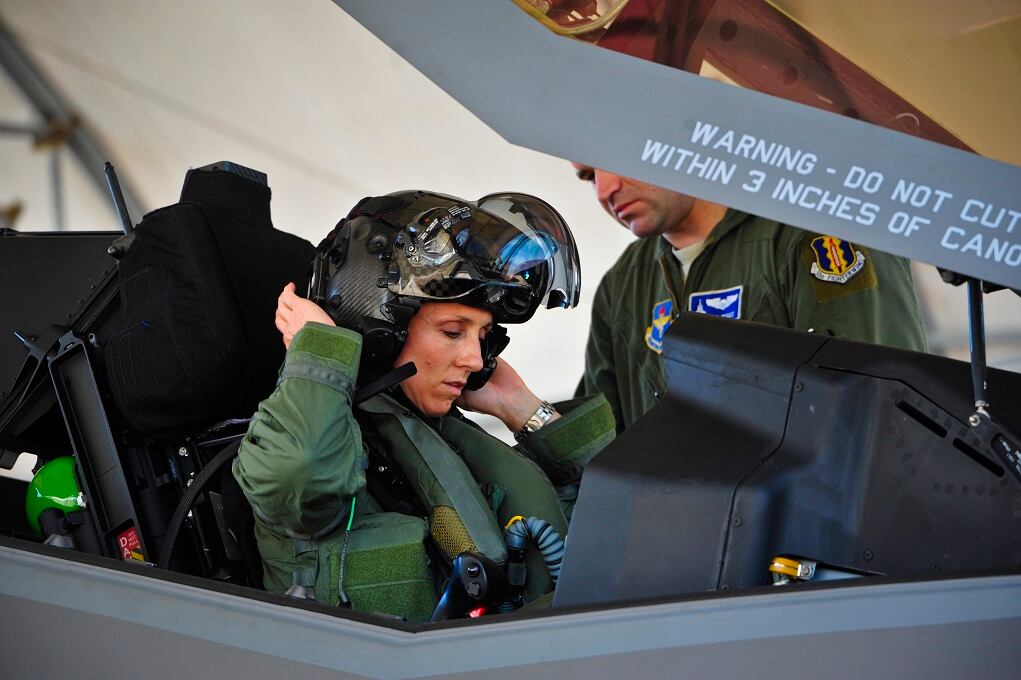The Air Force has removed the initial height requirements for officers who wish to become aviators, which it feared was discouraging women from even applying to become pilots.
As of May 13, the Air Force said in a Thursday release, initial applicants who want to become aviators no longer require waivers if they are shorter than 5′4″ or taller than 6′5″ when standing, or 34 inches to 40 inches while sitting.
“We’re really focused on identifying and eliminating barriers to serve in the Air Force,” Gwendolyn DeFilippi, assistant deputy chief of staff for manpower, personnel and services, said in the release. DeFilippi is chairwoman of the Air Force’s Barrier Analysis Working Group. “This is a huge win, especially for women and minorities of smaller stature who previously may have assumed they weren’t qualified to join our team.”
The old initial height requirements ensured applicants would be able to fly all aircraft in the Air Force’s fleet.
But people who were a little shorter or a little taller than that range, though they may not have been able to fit in every air frame, could still fly some aircraft. For example, former Dallas Cowboy and Air Force Academy football star Chad Hennings’ six-foot-six frame fit in the A-10 Warthog’s domed canopy, which he flew over Iraq during Operation Provide Comfort.
Maj. Gen. Craig Wills, commander of the 19th Air Force, said in an interview last November that aspiring aviators who applied, but fell out of that height range, were automatically placed into the waiver process. The Air Force was being generous with its waivers, he said, and tried to find something an applicant could fly. Wills said at the time that since 2015, the Air Force approved 87 percent of height waiver requests.
RELATED

But at a time when the Air Force is struggling to close a 2,000-airman pilot shortfall, and encourage more women to apply, Wills and other Air Force leaders feared the height requirement — even with waivers — proved to be a deterrent.
Wills said last year that 43.5 percent of American women between the ages of 20 and 29 are 5′4″ or less. That means a lot of potential pilots were told before even starting the process that they wouldn’t qualify, and they may not have known they could probably get a waiver, he said.
“Studies have shown that women’s perceptions about being fully qualified for a job makes them less likely to apply, even though there is a waiver option,” Lt. Col. Jessica Ruttenber, the leader of the Women’s Initiative Team, who led the height standards adjustment effort. “Modifying the height standard allows the Air Force to accommodate a larger and more diverse rated applicant pool within existing aircraft constraints.”
The Air Force is worried about a lack of diversity in its overwhelmingly white and male pilot ranks. Last year, the service said that about 6 percent of its pilots are women, and 7 percent are minorities.
Former Air Force Secretary Deborah Lee James in 2015 announced a series of moves to improve opportunities for women and minorities, including an expanded use of height waivers for pilots.
Instead of a blanket height requirement, the Air Force said that it will apply an “anthropometric screening process” to figure out which specific aircraft applicants would be able to fly. These measurements, in addition to standing height, also measure an applicant’s eye height while sitting, buttocks-to-knee length, and arm span, are entered into a computer to determine which aircraft the applicant could and could not safely fit in.
The age of much of the Air Force’s fleet is also a factor. When many Air Force’s planes were designed decades ago, women were not allowed to fly in the service. As a result, Ruttenber said that most Air Force aircraft were designed around the average height of men.
Stephen Losey is the air warfare reporter for Defense News. He previously covered leadership and personnel issues at Air Force Times, and the Pentagon, special operations and air warfare at Military.com. He has traveled to the Middle East to cover U.S. Air Force operations.





